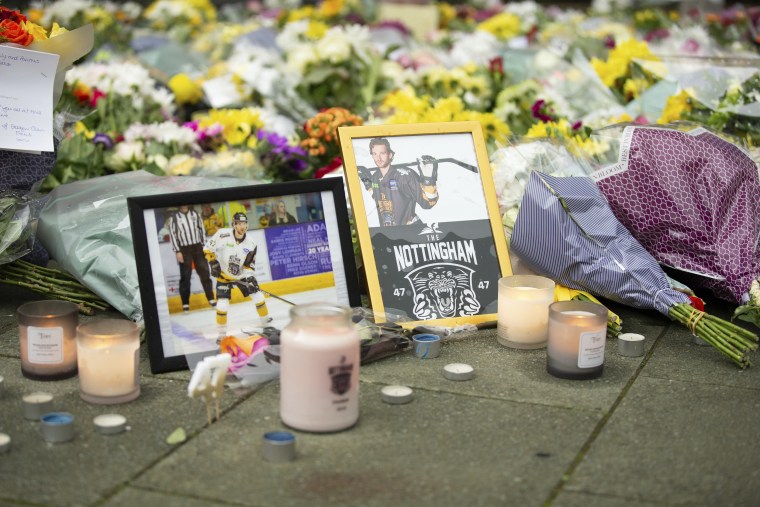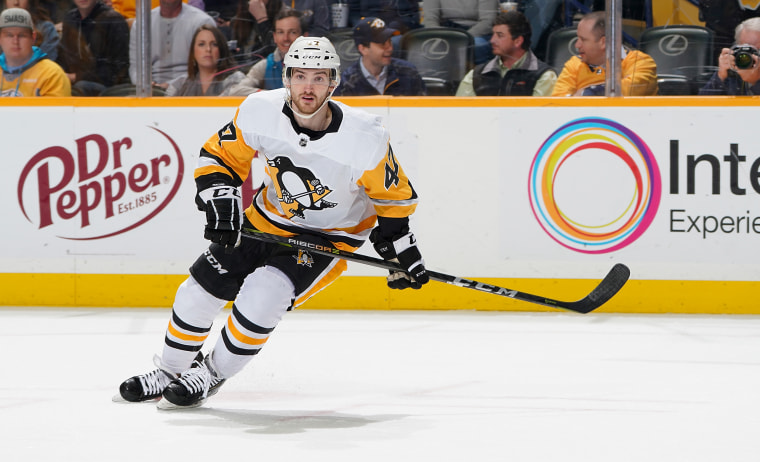Hockey is a dangerous sport. It’s easy to forget that players literally have small blades strapped to their feet, or that hitting one’s head on the ice hard enough can cause serious injury. But the world was reminded of just how dangerous a sport hockey can be on Oct. 28, when Adam Johnson of the U.K.'s Nottingham Panthers died after his neck was cut by an opponent’s skate blade during a game in England.
Many seem to agree that Johnson’s death was a tragic incident. Most people — from fans and media to experts, current and former hockey players (including some of Johnson’s teammates in Nottingham) — have called it a freak accident. Hockey is an incredibly fast sport. Players skate at speeds up to 25 miles per hour during a game, and sometimes when a player is falling, an errant skate or a stick comes up in the air and players have little to no control, resulting in injury.
How can deaths like Johnson’s be prevented?
The tragedy has been complicated by the announcement this week that South Yorkshire Police had made an arrest in connection with the death; the unnamed individual was released on bail Wednesday and no charges have been announced. This has provided fodder for a small group of fans and former players who questioned whether it was, in fact, an accident. (There’s also a thinly veiled layer of racism to the situation: Matt Petgrave, whose skate cut Johnson, is Black — although, again, the police have not identified who was taken into custody, which is standard in the U.K.) According to U.K.-based criminologist Victoria Silverwood, the arrest is simply part of the process of any investigation into an unexpected death and does not indicate that authorities are pursuing criminal charges.
Johnson’s death has reignited conversation about safety in the sport, namely, how can such deaths be prevented? The NHL has seen its share of serious injuries before, including ones similar to Johnson’s, only one of them fatal. Minnesota North Stars forward Bill Masterton died in 1968 several days after hitting his head on the ice following a pair of hits.
Buffalo Sabres goaltender Clint Malarchuk is said to have lost 1.5 liters of blood after his carotid artery was severed by a skate blade in 1989. A similar incident happened in 2008 to Florida Panthers forward Richard Zednik. Both survived.

In 2023, it seems like common sense that players should wear helmets and visors, along with the other padding and protection, but that wasn’t always the case. Hockey has learned from past injuries to better protect its players over the years — but sometimes “years” is the operative time frame. The NHL didn’t require helmets until 1979, 11 years after Masterton's death (and even then it included a grandfather clause for veterans). Visors weren’t made mandatory until 2013, again with a grandfather clause.
Could the same become true of cut-resistant neck and wrist protection in the wake of Johnson’s death? Since his death, hockey players from around the world have begun to try out various forms of protection, and some leagues are mandating it (or considering it). It would seem obvious that neck and wrist protection should be more common at the professional levels, and mandatory at junior/minor league levels.
USA Hockey recommends neck laceration protectors, but each association, league and team makes its own decision. Hockey Canada requires throat protectors for players registered in minor hockey, as well as for women. These protectors must be certified by the BNC, the Bureau de normalisation du Québec, which is the central body for standardization and certification in Canada. In the United Kingdom, the Elite Ice Hockey League (which Johnson played in) is only “strongly encouraging” its players to wear protective equipment. The English Ice Hockey Association, the sport’s governing body for junior and senior teams in the U.K., is mandating it, effective Jan. 1, 2024.
However, the NHL itself doesn’t have the ability, on its own, to mandate neck protection for the whole league without agreement from the players’ association (the league has reportedly been in contact with the PA, which has not made any public statement on the matter). So for the time being, neck protection remains an individual choice for teams and players. The Pittsburgh Penguins, for whom Johnson played for from 2018 to 2020, now require players with their AHL and ECHL affiliates to wear neck guards. The AHL’s Texas Stars are considering it, and several Providence Bruins and Rochester Americans players have begun wearing protection in practices and games.
If young players see their heroes wearing the gear, they’ll be more likely to wear it.
So it falls to players to start advocating for their own safety. Players like Seattle Kraken forward Yanni Gourde and Washington Capitals forward T.J. Oshie have begun testing out various forms of protection, from neck guards to cut-resistant turtlenecks.
Oshie said that he made the choice as a commitment to his kids, while Gourde said he hopes to serve as a role model for younger players who may want to wear protection. St. Louis Blues defenseman Scott Perunovich said he had similar thoughts. Others, like Buffalo Sabres defenseman Rasmus Dahlin, have tried new gear but many aren’t accustomed to wearing it and haven’t committed long term.
If young players see their heroes wearing the gear, they’ll be more likely to wear it. If players grow up wearing protective gear and become accustomed to it, they’ll be more comfortable donning it as adults. While serious injuries as a result of skate cuts are rare, if even one life is saved as a result, it will be worth the minimal discomfort some players encounter as they adjust to the new gear and find what works for them. It shouldn’t take decades for players, on their own, to advocate for their own safety.
